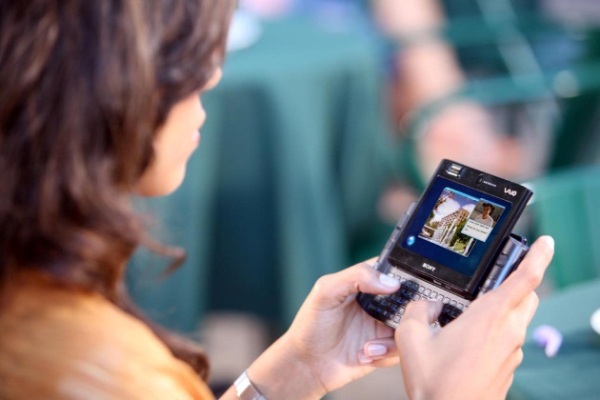Telecom infrastructure heads are looking for multiple tools to increase their data capabilities and reduce complex issues during the mobile broadband transition from 2G to 3G.
3G mobile broadband has become a strong focus area for several leading telecom operators such as Reliance Communications, Bharti Airtel, Vodafone, Tata Teleservices, Idea Cellular, etc.
For instance, Bharti Airtel has added 1,012 3G sites in the second quarter of fiscal 2014 against 676 2G sites in India.
On the other hand, Idea Cellular has added 891 3G sites against 5,876 2G sites, reflecting its rural focus offering better mobile broadband services.
Airtel added 1.2 million 3G subscribers in the second quarter of fiscal 2014 against 2.8 million 2G mobile users.
Vodafone India has added 3.4 million 3G users.
2G to 3G mobile broadband transition
Because 4G in a nascent stage, mobile broadband driven by 3G and 2G are gaining further momentum in India. But 2G to 3G mobile broadband transition is a critical issue for telecom operators’ CTOs.
Ericsson, the number of telecom vendor in the world, believes that in the transition to mobile broadband services, the addition of data capabilities has added considerable complexity to networks.
Furthermore, telecom operators will offload seek to improve network capacity and performance and hence further increase data usage through heterogeneous radio networks as well as Wi-Fi. These and other trends need to be efficiently managed in order to contain the complexity which leads to new technology and support system needs.
Telecom vendor Ericsson’s strategy is to be the preferred business partner for our customers. In doing so, the company strives to be the market and technology leader by offering superior end-to-end solutions mainly related to network infrastructure, network management and other service offerings. India is a key market and a global development and services hub for Ericsson. It’s also a potential manufacturing export hub for Ericsson.
Derek Long, head of Communication Services and MBB, Ericsson India, sees three big opportunities, in network performance and customer experience in 3G networks, multi network managed services and an integrated OSS/BSS approach to enable services across multiple network technologies such as 2G/3G/LTE/wired. Ericsson is developing ways to deliver a better mobile broadband experience through 3G networks supported by seamlessly integrated Wi-Fi, managing operator’s Opex and revenue needs through Ericsson’s multi network, multi technology managed services and delivering solutions from our integrated operations support systems and billing support systems.
“We are also looking at intelligent ways to build robust and smart networks that will deliver a compelling customer experience,” Ericsson’s Derek Long said.
Small cell demand
Ericsson is set to redefine the small cell market with the introduction of its newest product – an innovative indoor wireless solution. The Ericsson Radio Dot System is the result of two years of research and development, and incorporates 14 patents. This product will provide high-quality access to mobile broadband and voice services indoors, effectively addressing current coverage challenges.
The Ericsson Radio Dot System will remove indoor bottlenecks by providing coverage to different kinds of users in medium to large indoor locations. The system uses an innovative antenna element – a radio dot – which enables high performance mobile broadband. We are already in preliminary discussion phase with India’s top telecom operators to understand their needs for this solution.
Specialized Antennas
Pankaj Gandhi, director – Wireless, CommScope India and SAARC, says in areas with even higher capacity needs like open arenas, outdoor events or high dense capacity areas (like downtown business buildings), antennas with even more and even narrower beams can provide capacity for even the most service and capacity demanding areas. 3-beam, 5-beam and even 18-beam antennas exist with shapes that will not only significantly add capacity, but also improve data throughput by increasing the gain of the antenna.
“We are bringing innovative concepts to our customer to handle changing wireless RF networks. For example, apart from multi-beam and multi-port antennas and filter multiplexing solutions, we recently launched specialized antennas for ‘High Rise Coverage’ from outdoor sites,” Pankaj Gandhi of CommScope said.
“At many highrise buildings it is not economically feasible to invest in IBS or small cells. We have done a couple of deployments of this CMAX series antennas with lead operators in India where by adding a sector at an existing site, the coverage could be up to 20-25 floors of the high rise building,” he added.
Telecom vendor focus
To manage the challenge of increasing data volumes in a limited spectrum, Ericsson’s primary focus is on maximising customer experience at optimum total cost to the operator.
In addition to optimizing WCDMA network performance, Ericsson’s Derek Long sees increasing interest in Ericsson’s heterogeneous network technologies including Wi-Fi for offloading MB data from 3G networks.
In a hotspot environment like a business district or an airport, 3G capacity will become insufficient leading to an impact on customer experience. Currently, more than 70 percent of mobile traffic is generated indoors. However, at present there is no mainstream technology that offers a complete and optimized solution to cost-effectively cover all building types and full fill operator and user demands.
Pic. src: impactlab.net






